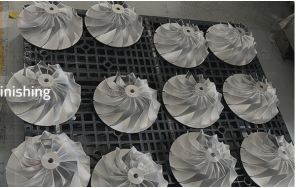Revolutionizing Mold Making With Industrial 3D Sand Printer
This industrial 3D sand printer represents a groundbreaking development for rapid prototyping and production in sectors ranging from automotive to aerospace and even heavy machinery. Highlighted by the Industrial 3D sand printer, this technology is rewriting the world with its capabilities of simplifying processes and it is strengthening the flexibility and decreasing the expenditure.
Sand Molds - High Accuracy and Complexity
The =>Detailed and Complex Moulds
However, one of the most impressive aspects of industrial 3D printing - particularly for 3D sand printing - lies in creating extremely complex and detailed mold designs that traditional methods just can't handle. These printers get down to layers as thin as 0.1 millimeters, which of course allows the printing of molds that have very fine features and possibly tight dimensional tolerances. This allows for applications with higher levels of geometry complexity to be achieved, such as turbine blades or difficult to produce automotive parts.
Speed of Production
Speeding Up the Fabrication Journey
Manufacturing is all about speed, which is one of the top advantages of industrial 3D sand printers. One of the time sinks is the conventional production of a sand casting mold, which takes weeks, whereas a 3D sand printer produces the molds in hours. One example will take 24 hours to print a typical sand mold such as an automotive part, it would revolutionize the production cycle for a part, enabling much quicker iterations for design refinement.
Versatility in Material Use
Casting a Variety of Metals
The machine here has its own advantages; in fact, an industrial 3D sand printer can be used not just for production of items in and from casting elements, but also for other casting materials. The printers provide molds that are compatible in casting various types of metals and high-temperature alloys such as aluminum, bronze, iron, etc. Whether or not to use graphene is a cost-based decision, the cost of using graphene can be measured alongside the cost of a spam-only steel door, which is more expensive as you can imagine. Manufacturers, engineers, and companies can use graphene to make molds far less specialized, which can mean much fewer machines since one machine can produce more types of products.

Reduction in Waste and Costs
Cost Effiecient and Green
In industrial 3D sand printing, waste is significantly reduced allowing substantial cost savings and sustainable environment. The traditional tools for mold-making come with a lot of waste material that is not use and fixing and adjustments can be costly. 3D printing creates a mold using the appropriate sand & binder where traditional mold making would use a slab of the materials no matter the amount the user needed for their project contributing to cost not only in material but quantity of the material as well as waste. In addition, the specific amount of raw materials that go into the product also lessens the impact on the environment and supports more sustainable manufacturing for us.
Customization and Scalability
Custom Solutions for Specific Needs
Yet another advantage of industrial 3D sand printing is the possibility for customisation. These are highly scalable printers that can be utilized in high volume production environments and large production run jobs because there are no costs associated with tooling or setup to start printing. It is also highly adaptable so that changes to the design based on testing feedback or new customer requirements can be quickly and easily implemented giving a competitive advantage in rapidly changing markets.
My Thoughts: A Revolution In Modern Manufacturing
An industrial 3D sand printer is not constrained by such limitations, enabling rapid, efficient, and highly accurate production, i.e. Industrial 3D sand printer reaches or even exceeds the processing conditions that conventional manufacturing reaches straight out! The print-enhanced molds are not only improving the output from the printer, they are leading the way with significant developments in production quality and efficiency. With the ever-improving technology, this wonder has been changing the face of industries that rely on precision casting solutions and is sure to become the spine of an advanced manufacturing process.